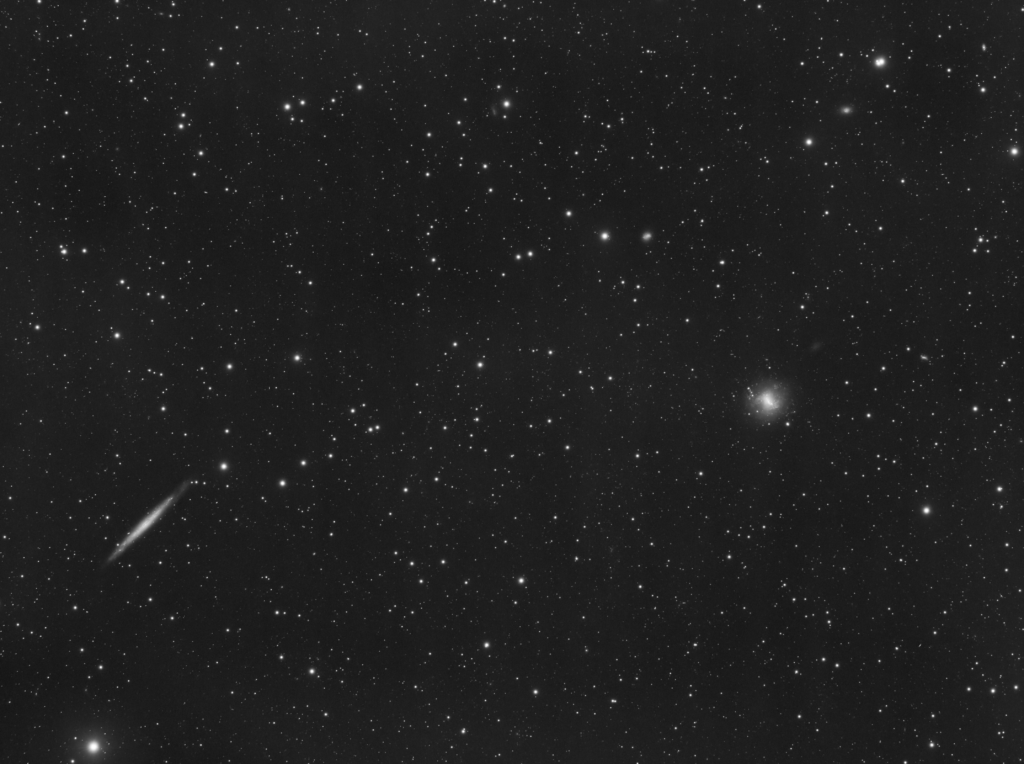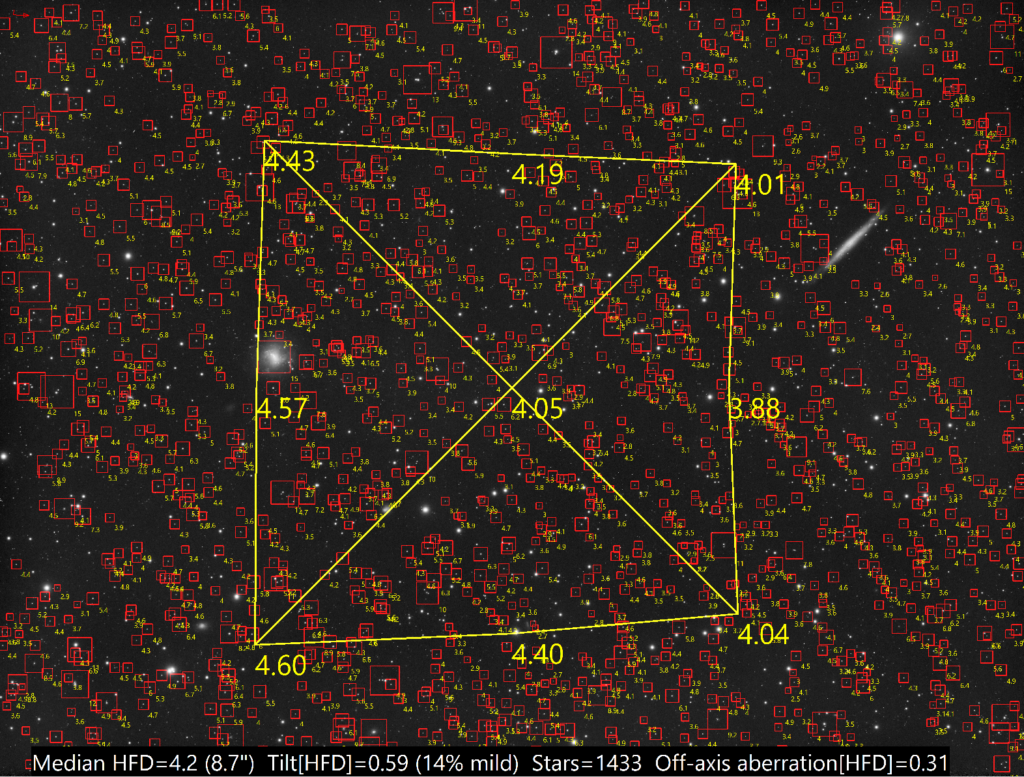Session Data
- Date: 14/5/2020
- Time: 20:37 – 02:05 UT
- Seeing: Unknown
- Transparency: Unknown
- Temp: 7 C,
- Air Pressure: 1023mb
- Humidity: 82%
- Dew Point: 4C
- Wind Speed: 10mph
- Average Seeing:
- Average SQM:
Scope: TMB 80 f/4.8 Camera: ZWO ASI 1600MM Pro, No Filter. Darks and Flats applied. Image rotation 268 degrees
A two for the price of one observation in that we get NGC4214 in the FOV as well.
This is one of those forgotten sessions The data was taken, but I never got round to processing it till October of 2024. The image is rotated at 268 degrees with North rotated anticlockwise to the left.
A stack of 163 x 60sec frames using Pixinsight’s fast batch processing, which reduces calibration times by a massive margin. For screen images produced at small pixel sizes, any reduction in quality is never going to be noticeable.
All I’ve done to the image is a tweek from the std STF stretch and a round of BXT and BlurXterminator.
NGC4244 & NGC4214-NGC4228


I started off just going for NGC4244 but seeing that NGC4214 was close by decided that the framing of both targets made a nice composition.
Looking at NGC4244 first, this galaxy is edge on and looks to be slightly asymmetric in that the fainter outer edge looks a little longer from the core centre than the Eastern end. There is no bright core as such but you can make out a long dust lane running for a short distance before it breaks up. As you look towards the edge the dust lane breaks up into random shaped clumps which I assume are star forming regions.
Moving onto NGC4214. This actually has two designations . NGC4214 and NGC4228. I don’t know what happen with this multiple naming, but I presume the earlier numbering take precedence and the later number are just classed as the duplicate.
There is a bright core made up of what I assume are star forming regions that are clustered together to form a bar. I think I can just make out a shape of a spiral on the Western end, but it all pretty chaotic. There is a bright condensation of stars and HII regions 2.6 arc/min to the NW.
10 arc/min to the SW is a faint smudge which astroplanner tells me is PGC39145 of 14.5mag and a little further South of that is another PGC39150 at 14.1 mag.

Another thing that surprised me was the tilt on this setup. The TMB was made in the days when scopes were designed to be looked through with a drawtube that took a diagonal. With my TV focal reducer, a short tube extension and then the camera, which is then just a slide in fit to the focuser, the whole thing is just sagging under the weight. You can clearly see the stars at the edge tear-dropping. Having said that, you do need to be pixel peeping to notice this.